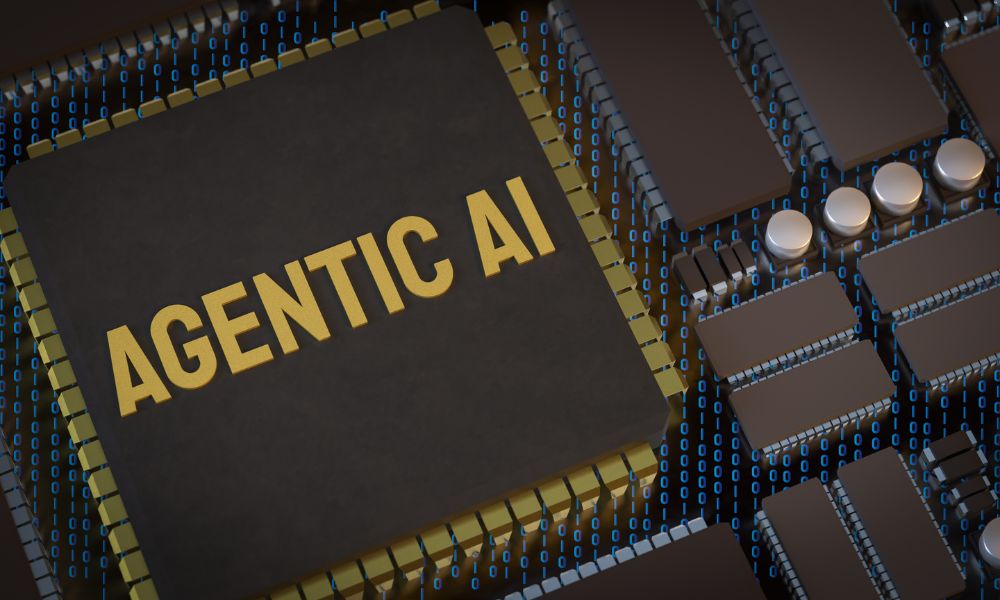Ever wondered what’s happening under the hood when you interact with an AI agent that seems to understand context, makes decisions, and learns from every conversation? You’re not alone. While most people see the sleek interface and impressive responses, the real magic happens in the sophisticated architecture that powers these intelligent systems.
Think of AI agent architecture like the blueprint of a smart building. Just as a modern skyscraper needs structural engineering, electrical systems, and intelligent controls to function seamlessly, AI agents require carefully designed components working together to deliver truly intelligent behavior.
What Makes an AI Agent Truly Intelligent?
Before diving into the technical architecture, let’s clarify what we mean by “intelligent” AI agents. Unlike simple chatbots that follow predetermined scripts, intelligent AI agents can understand context, reason through problems, make autonomous decisions, and adapt their behavior based on new information.
The key difference lies in their architecture. Traditional automation systems follow rigid if-then rules, while AI agents use sophisticated neural networks, knowledge graphs, and decision-making frameworks that enable genuine understanding and reasoning.
The Core Components of AI Agent Architecture
Perception Layer: The Agent’s Senses
Just like humans need senses to understand their environment, AI agents need a perception layer to process incoming information. This component handles multiple types of input including natural language text, voice commands, visual data, and structured data from APIs.
Modern AI agents use advanced natural language processing models to understand not just the words you’re saying, but the intent behind them. They can detect emotional undertones, identify context from previous conversations, and even understand implied requests that aren’t explicitly stated.
Knowledge Base: The Agent’s Memory and Wisdom
This is where things get really interesting. The knowledge base serves as the agent’s long term memory and repository of learned information. Unlike traditional databases that store static information, intelligent AI systems maintain dynamic knowledge graphs that can evolve and expand over time.
The knowledge base includes factual information, learned patterns from interactions, domain-specific expertise, and contextual understanding about relationships between different concepts. This allows the agent to make informed decisions based on both programmed knowledge and accumulated experience.
Reasoning Engine: The Agent’s Brain
The reasoning engine is perhaps the most crucial component of AI agent architecture. This is where the actual “thinking” happens. Using advanced machine learning models and logical inference systems, the reasoning engine processes information from the perception layer and knowledge base to make decisions.
Modern reasoning engines employ techniques like transformer architectures, attention mechanisms, and multi-step reasoning to handle complex queries that require connecting multiple pieces of information. They can perform tasks like planning multi-step actions, evaluating trade-offs, and even engaging in creative problem solving.
Action Layer: How Agents Influence the World
Once an AI agent has processed information and made decisions, it needs to take action. The action layer translates the agent’s decisions into concrete outputs, whether that’s generating natural language responses, triggering API calls to external systems, or initiating automated workflows.
Sophisticated AI automation systems can coordinate multiple actions simultaneously, handle error recovery, and adapt their approach based on feedback from their actions.
Memory Systems: Short Term vs Long Term Intelligence
One of the most fascinating aspects of AI agent architecture is how they handle memory. Just like human memory, AI agents maintain both short term and long term memory systems.
Short Term Memory (Working Memory) This handles the immediate context of a conversation or task. It keeps track of what’s been discussed recently, maintains state information for ongoing processes, and provides the context needed for coherent interactions.
Long Term Memory (Persistent Knowledge) This stores learned patterns, user preferences, historical interactions, and accumulated knowledge. Advanced AI agents can recall relevant information from months-old conversations and apply learned insights to new situations.
The integration between these memory systems is what allows AI agents to provide personalized, contextually aware responses that improve over time.
Decision Making Frameworks: How AI Agents Choose
The decision making process in AI agents involves multiple sophisticated mechanisms working together. Goal-oriented planning allows agents to break down complex objectives into actionable steps. Multi-criteria evaluation helps them weigh different options against multiple factors simultaneously.
Risk assessment mechanisms enable agents to evaluate potential outcomes and choose actions that minimize negative consequences. Perhaps most importantly, uncertainty handling allows agents to make reasonable decisions even when they don’t have complete information.
Learning and Adaptation Mechanisms
What separates truly intelligent AI agents from sophisticated automation is their ability to learn and adapt. This happens through several mechanisms including reinforcement learning from user feedback, pattern recognition from historical data, and continuous model updates that improve performance over time.
Custom AI development often focuses heavily on these learning mechanisms, tailoring them to specific business domains and use cases.
Integration Architecture: Connecting to Your Business Systems
Real world AI agents don’t operate in isolation. They need to integrate seamlessly with existing business systems, databases, and workflows. This requires sophisticated integration architecture that can handle API communications, data synchronization, security protocols, and error handling.
The integration layer also manages authentication, authorization, and data flow between the AI agent and external systems. This is crucial for enterprise deployments where the agent needs to access multiple business applications and maintain consistency across different platforms.
Scalability and Performance Considerations
As AI agents handle more users and more complex tasks, their architecture must scale efficiently. This involves distributed processing capabilities that can spread computational load across multiple servers, caching mechanisms that store frequently accessed information for quick retrieval, and load balancing systems that ensure consistent performance under varying demand.
Advanced AI architectures also implement intelligent resource allocation, automatically scaling computing resources based on current demand and complexity of tasks being processed.
Security and Privacy in AI Agent Architecture
With great intelligence comes great responsibility. AI agent architecture must include robust security measures including data encryption for all communications and storage, access controls that ensure only authorized users can interact with sensitive functions, and audit trails that track all agent actions for compliance and debugging purposes.
Privacy considerations are especially important, which is why many organizations are turning to AI and machine learning solutions that can operate on-premises or in private cloud environments, keeping sensitive data under their direct control.
The Role of Training and Fine Tuning
Behind every intelligent AI agent is extensive training on domain-specific data. The architecture must support continuous learning and model updates without disrupting ongoing operations. This includes mechanisms for safe model deployment, A/B testing of different approaches, and rollback capabilities in case of issues.
Fine tuning allows AI agents to adapt to specific business contexts, industry terminology, and organizational preferences while maintaining their core intelligence capabilities.
Real World Architecture Examples
To make this concrete, consider how different types of AI agents implement these architectural principles. Customer service agents combine natural language understanding with knowledge bases of product information and company policies. Business process automation agents integrate with multiple enterprise systems while maintaining context across complex multi-step workflows.
Financial analysis agents process real-time market data while applying learned patterns and risk management rules. Each implementation adapts the core architectural principles to specific domain requirements and performance needs.
Monitoring and Maintenance Systems
Intelligent AI agents require sophisticated monitoring to ensure they’re performing as expected. This includes performance metrics tracking, accuracy monitoring for different types of tasks, user satisfaction measurement, and system health monitoring.
Maintenance systems handle model updates, knowledge base refresh, performance optimization, and bug fixes. Advanced architectures include automated monitoring that can detect and alert on potential issues before they impact users.
The Future of AI Agent Architecture
As we look ahead, AI agent architecture continues to evolve rapidly. Emerging trends include multi-modal processing that can handle text, voice, and visual inputs simultaneously, federated learning approaches that allow agents to learn from distributed data sources while maintaining privacy, and quantum-enhanced processing for certain types of complex reasoning tasks.
The integration of these advanced capabilities promises even more sophisticated and capable AI agents that can handle increasingly complex business challenges.
Building vs Buying: Architecture Considerations
When organizations consider implementing AI agents, they face the build versus buy decision. Building custom architecture provides maximum flexibility and control but requires significant technical expertise and ongoing maintenance. Buying existing solutions offers faster implementation but may limit customization options.
The choice often depends on specific business requirements, available technical resources, and long-term strategic goals. Many organizations find success with hybrid approaches that combine existing platforms with custom components tailored to their unique needs.
Getting Started with AI Agent Architecture
If you’re considering implementing AI agents in your organization, start by clearly defining your use cases and requirements. Consider what types of decisions the agent needs to make, what data sources it needs to access, and how it will integrate with your existing systems.
Next, evaluate your technical infrastructure and determine whether you need cloud-based, on-premises, or hybrid deployment. Consider scalability requirements, security constraints, and performance expectations.
Finally, think about the ongoing management and evolution of your AI agent. Who will monitor its performance? How will you handle updates and improvements? What metrics will you use to measure success?
Conclusion: The Power of Well-Designed AI Architecture
Understanding AI agent architecture isn’t just academic curiosity. It’s the foundation for making informed decisions about implementing AI in your business. When you understand how these systems work, you can better evaluate solutions, set realistic expectations, and ensure successful deployments.
The most successful AI implementations combine sophisticated architecture with clear business objectives and realistic implementation plans. By focusing on both the technical capabilities and practical business needs, organizations can harness the full power of intelligent AI agents.
Whether you’re just starting to explore AI possibilities or looking to upgrade existing systems, the architectural principles we’ve discussed provide a framework for building truly intelligent, scalable, and valuable AI solutions.
Ready to transform your business with intelligent AI agents? At Zackriya Solutions, we specialize in designing and implementing custom AI architectures that deliver real business value while maintaining the highest standards of security and performance. Our team of AI experts can help you navigate the complexities of AI agent development and create solutions perfectly tailored to your unique needs.
Contact us today to discuss how we can build intelligent AI systems that give your business a competitive edge while keeping your data secure and under your control.
Frequently Asked Questions
The five main types of AI agents are simple reflex agents that respond to current perceptions, model-based reflex agents that maintain internal state, goal-based agents that work toward specific objectives, utility-based agents that optimize for maximum benefit, and learning agents that improve their performance over time. Each type represents increasing levels of sophistication and autonomy in decision-making capabilities.
The four fundamental rules of AI agents are autonomy (ability to operate independently without constant human supervision), reactivity (responding appropriately to environmental changes), proactivity (taking initiative to achieve goals), and social ability (interacting effectively with other agents or humans). These rules ensure AI agents can function as intelligent, independent systems in complex environ
An AI agent is a complete autonomous system that can perceive, reason, make decisions, and take actions in an environment, while an LLM (Large Language Model) is specifically a language processing component that generates text based on input prompts. AI agents often incorporate LLMs as one component within their broader architecture for natural language understanding and generation.
AI agent architecture consists of four main layers: the perception layer for processing inputs, the knowledge base for storing information and learned patterns, the reasoning engine for decision-making and problem-solving, and the action layer for executing responses and commands. These components work together with memory systems and integration frameworks to create intelligent, autonomous behavior.
While basic AI agents can be built using existing platforms and tools, creating sophisticated, production-ready agents requires significant technical expertise in machine learning, software architecture, and domain-specific knowledge. Most businesses benefit from partnering with experienced AI development companies that can design custom solutions tailored to specific requirements and ensure proper security, scalability, and performance.
The future beyond current AI agents includes multi-agent systems where multiple AI agents collaborate to solve complex problems, and autonomous AI ecosystems that can self-organize and evolve without human intervention. These advanced systems will likely incorporate quantum computing capabilities, enhanced emotional intelligence, and the ability to operate seamlessly across physical and digital environments.




